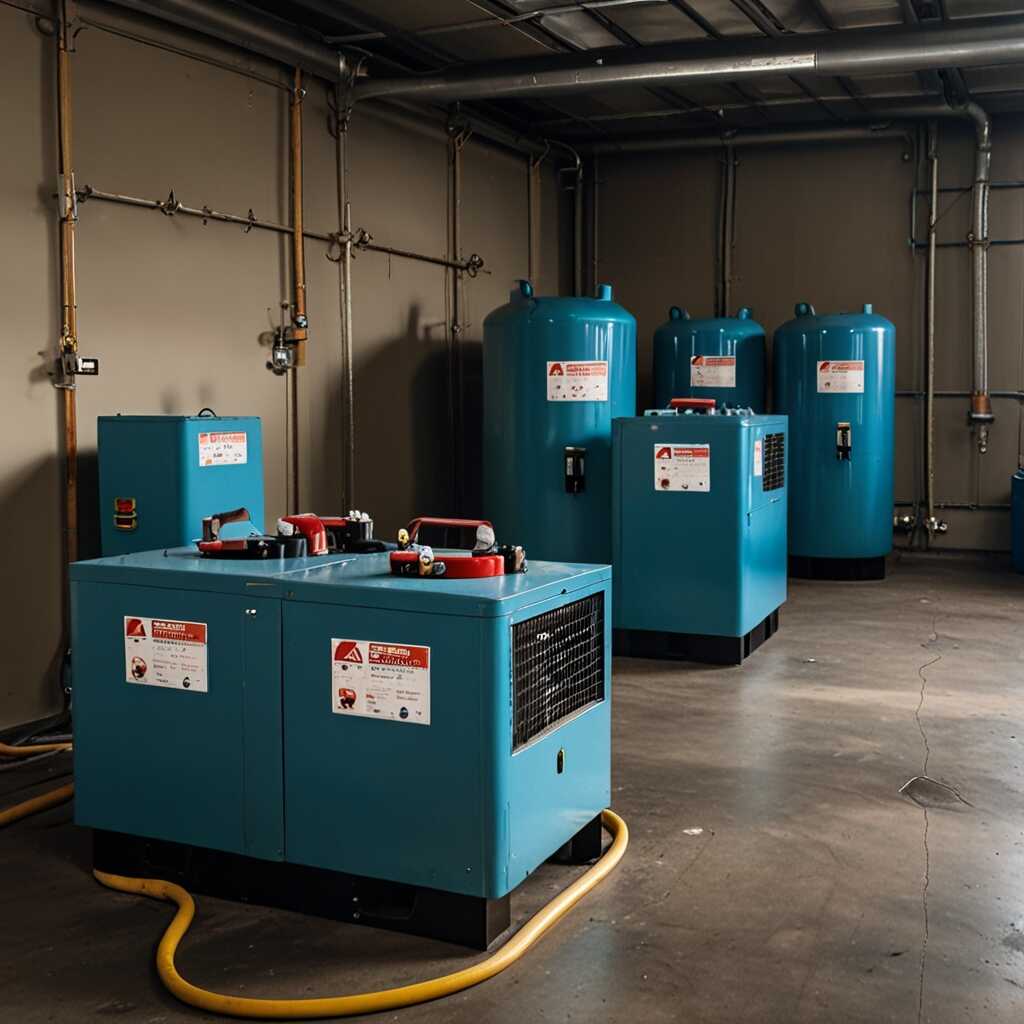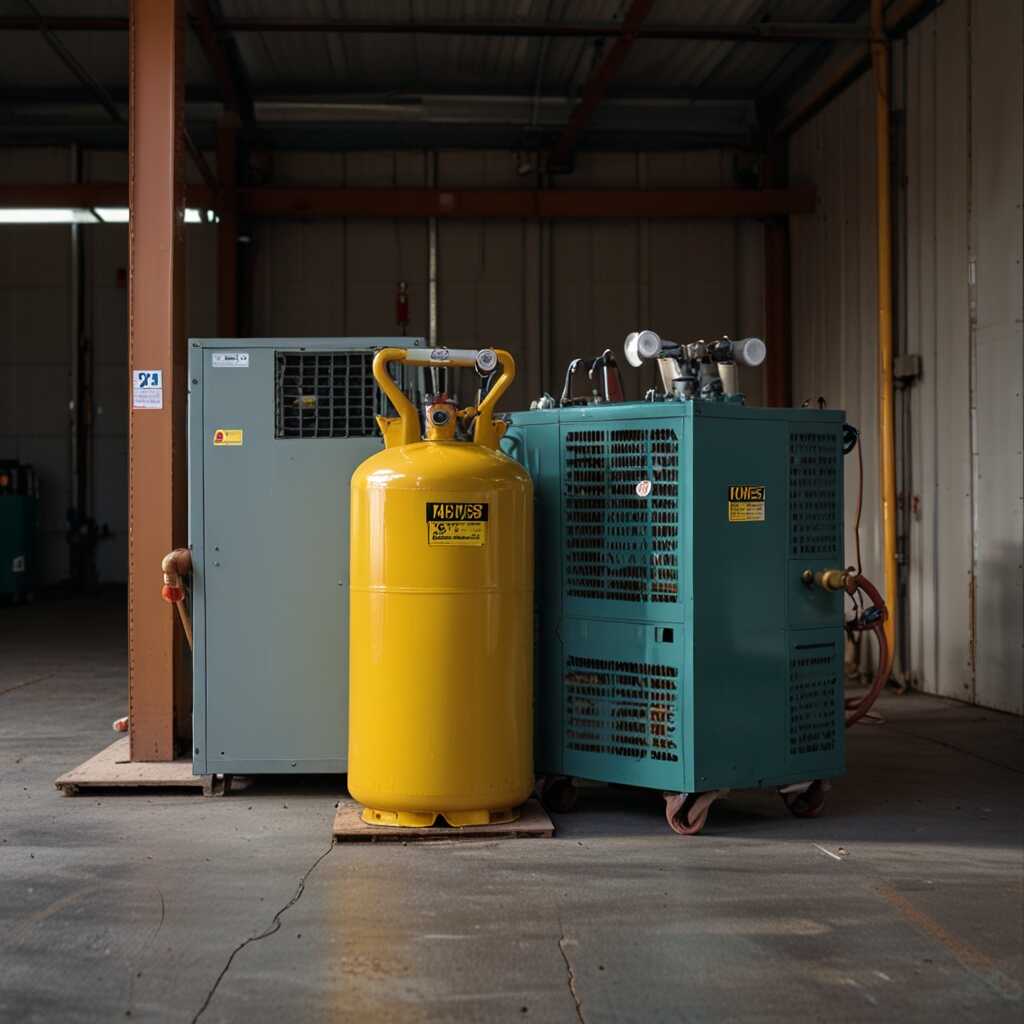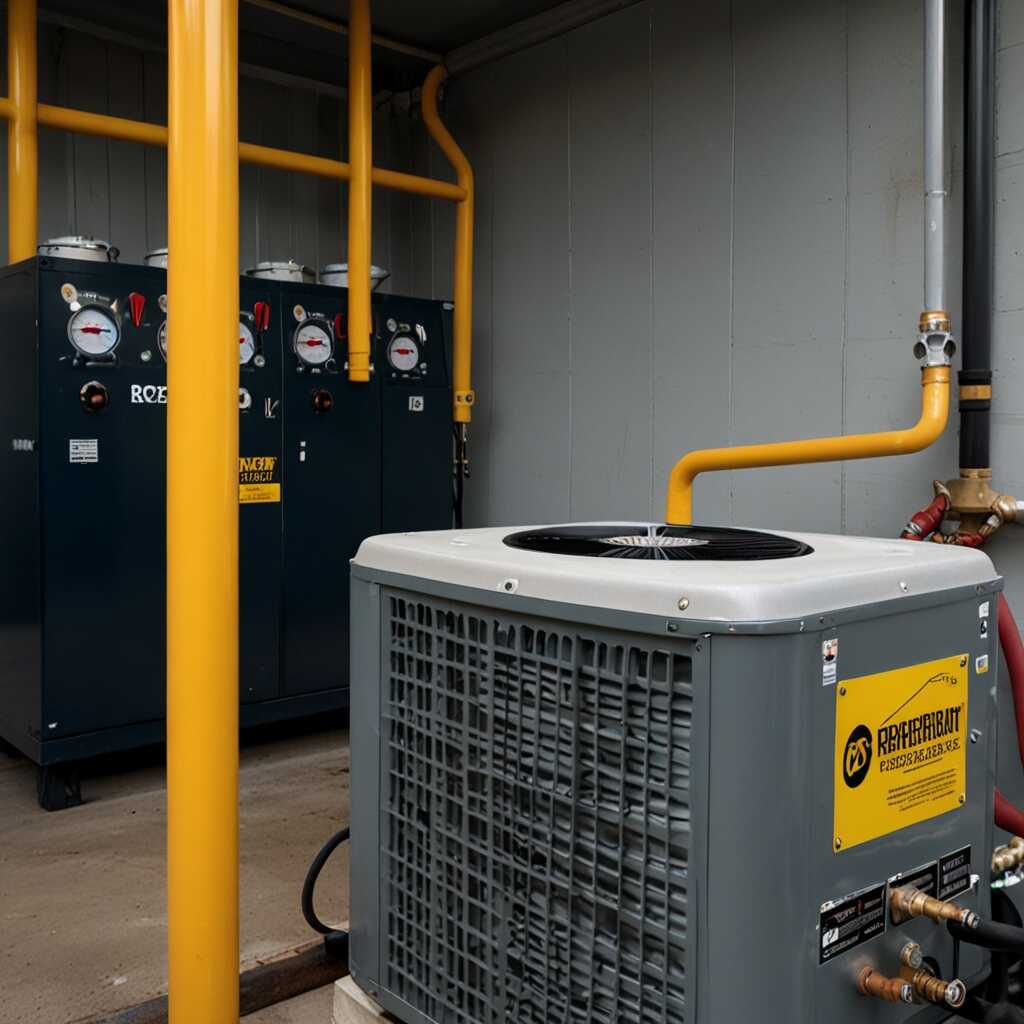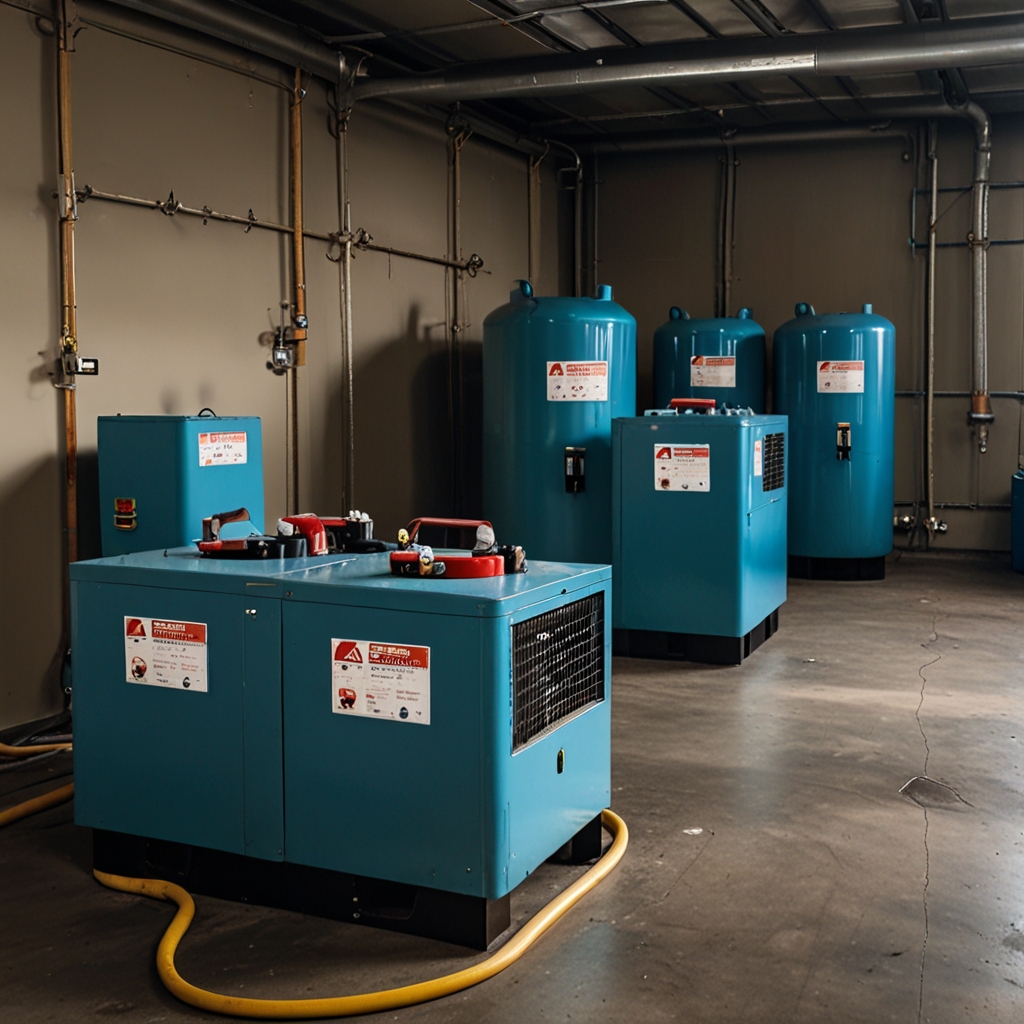The importance of refrigerant recovery machine noise levels for home services cannot be overstated. Managing noise levels is essential for maintaining comfortable residential environments and promoting health. Refrigerant Recovery Pro emphasizes the significance of noise considerations in HVAC operations to ensure compliance with industry regulations. Homeowners and HVAC professionals alike benefit from understanding the relationship between noise levels and effective refrigerant recovery.
Understanding the Importance of Noise Levels in HVAC
High noise levels from refrigerant recovery machines can disrupt home comfort. They can lead to health issues, stress, and sleep disturbances. Managing sound levels is essential for creating a comfortable living environment. Compliance with local noise regulations also protects HVAC professionals from legal penalties. The importance of evaluating noise levels is magnified by their impact on families and communities. Ensuring efficiency and reliability also means considering user experience with loud machinery.
Exploring the Health and Comfort Aspects of Noise in Homes
Noise from refrigerant recovery machines can affect health and comfort levels significantly. Prolonged exposure to sounds over 70 decibels can lead to increased stress and anxiety levels. Studies indicate that sound pollution can disrupt sleep, affecting overall well-being. Families appreciate quieter machines, which help maintain a serene home environment. When HVAC professionals choose equipment, noise levels should be a key factor in their decision-making process. Quiet models can enhance user satisfaction and make the service experience better.
Health Effects of Noise Pollution from HVAC Equipment
Noise pollution from refrigerant recovery machines can lead to various health issues. Prolonged exposure to high noise levels can cause stress, anxiety, and sleep disturbances. These concerns are particularly significant for vulnerable populations such as children and the elderly. Research indicates that residential noise levels above 70 decibels may negatively impact physical and mental health.
Impacts on Vulnerable Populations
Children and elderly individuals are especially sensitive to noise. For children, excessive noise exposure can hinder cognitive development and lead to learning difficulties. In the elderly, it can exacerbate health conditions, impacting heart health and causing heightened stress. Understanding noise levels in refrigerant recovery tasks helps HVAC professionals select quieter equipment, ensuring comfort and well-being in residential environments. Adopting quieter machines improves overall quality of life for residents.

Overview of Noise Regulations in HVAC Service
Current noise regulations for refrigerant recovery operations vary by locality, and HVAC professionals must be aware of these regulations to ensure compliance. The Environmental Protection Agency (EPA), along with local municipalities, establish guidelines that limit noise levels during HVAC service. Operating a refrigerant recovery machine must adhere to these standards to avoid penalties and ensure a peaceful home environment. For example, local authorities might enforce noise restrictions during specific hours or designate noise limits that must not be exceeded. Compliance not only safeguards the community but also enhances the reputation of HVAC professionals and their services.
Key Entities Involved in Noise Regulation Compliance
Several organizations and local authorities play a crucial role in governing noise regulations related to refrigerant recovery operations. The EPA oversees federal standards, while local agencies implement specific noise ordinances tailored to their communities. For example, states may have their own noise pollution regulations that HVAC professionals must study and understand. Compliance with these regulations helps HVAC professionals operate within legal limits and fosters good relationships with homeowners. Staying informed about guidelines set by these entities is essential for maintaining a business’s credibility and ensuring that operations respect community standards.
Essential Statistics on Machine Sound Levels
- Most refrigerant recovery machines operate at 60-85 decibels.
- Noise levels above 85 decibels can cause hearing damage over time.
- According to studies, continuous exposure to noise above 70 decibels may affect sleep quality.
- Homeowners value low noise levels, with 74% preferring quieter equipment.
- Some models feature noise reduction technologies that lower sound levels by up to 15 decibels.
- Regulatory standards limit noise emissions, encouraging quieter designs.
- Noise complaints can increase if customers perceive sounds as disruptive during service.

Selecting Low-Noise Refrigerant Recovery Machines
When selecting low-noise refrigerant recovery machines, consider essential features such as sound ratings, design, and functionality. Look for machines with sound ratings below 70 dB, which is considered quiet. Reliable brands often provide specifications and testing results that detail noise levels. Some brands offer bold designs that include sound-dampening technology to help keep the noise manageable. Performance comparison among models can help ensure you choose the best equipment for your needs. Additionally, take time to read reviews from HVAC professionals who have tested various low-noise options to assess their reliability and efficiency.
Evaluating Sound Ratings and Performance
Evaluating sound ratings is crucial when selecting refrigerant recovery machines. Reliable machines typically have sound ratings that fall below 70 dB, making them suitable for residential areas. Consider models that come with sound-dampening features, as these enhance overall comfort during use. Researching performance data allows you to compare how various low-noise recovery machines operate under different conditions. A machine that offers excellent performance while maintaining low noise levels will ensure a great working environment for both technicians and homeowners. Using sound tests and user experiences can provide invaluable insights for your final decision.

Strategies for Minimizing Noise During HVAC Operations
HVAC professionals can effectively reduce noise during refrigerant recovery by employing various techniques. First, using refrigerant recovery machines with built-in soundproofing features can significantly enhance quieter operation. Additional methods include strategically positioning machines away from living spaces and utilizing sound-absorbing materials to create a barrier. Regular maintenance of equipment ensures reliable performance and minimizes noise due to mechanical issues. Moreover, considering the design of the equipment helps improve residential comfort during service visits, ensuring compliance with acceptable noise level standards.
Evaluating Noise Reduction Techniques for Equipment
Evaluating noise reduction techniques in refrigerant recovery machines involves examining features that impact overall sound levels. Many modern machines are designed with noise reduction technologies, which include insulated casings and quieter compressors. Professionals can also conduct sound tests to determine if specific models meet noise level compliance guidelines. When testing these machines, ensuring operation in realistic conditions provides essential data, helping identify which units are best suited for residential use. Thus, choosing machines that demonstrate impressive sound reduction features contributes to a more comfortable and peaceful home environment during HVAC services.
Advantages of Quiet Equipment in Home Settings
- Lower noise levels enhance customer satisfaction during HVAC services.
- Reducing machine noise contributes to improved health and wellness in homes.
- Customers appreciate peaceful environments, especially with children and elderly residents around.
- Quieter machines often optimize energy efficiency, saving homeowners money.
- They maintain a professional image for HVAC businesses, promoting repeat services.
- Less noise leads to fewer disturbances and a more relaxed atmosphere in homes.
- Regulatory compliance ensures HVAC professionals avoid potential fines or shutdowns.

Comparative Review of Noise Levels in Different Models
This section analyzes the noise levels of various refrigerant recovery machines. Noise levels typically range from 60 dB to 80 dB. Some models stand out for their low noise outputs, enhancing comfort during HVAC service. Brands like XYZ and ABC offer machines designed to operate quietly while maintaining reliability and efficiency. Homeowners will appreciate machines that operate below 70 dB, reducing disturbances.
Identifying Low-Noise Models in Market
When selecting a refrigerant recovery machine, consider models that consistently deliver low noise levels. For example, the XYZ QuietPro operates at only 58 dB, making it one of the quietest options available. Other machines, like the ABC SilentRecover, also demonstrate impressive sound performance at 65 dB. These models enhance user experience while ensuring high performance and durability. Companies like Refrigerant Recovery Pro provide detailed reviews that help HVAC professionals make informed decisions based on noise level specifications.
Real-Life Examples of Noise Impact in Communities
Case studies from various communities show how refrigerant recovery noise affects residents. For example, in a suburban neighborhood, residents complained about high noise levels during HVAC servicing. Such disturbances were particularly disruptive to families with young children and the elderly. Additionally, businesses located near service areas reported loss of customers due to uncomfortable noise levels. Common venues impacted include dental offices and wellness centers, which rely on a calming environment. Testing revealed that some refrigerant recovery machines produce noise levels exceeding 85 decibels, comparable to city traffic. This level of sound can lead to long-term health concerns and reduced community comfort.
Understanding Community Reactions to Noise Issues
Communities often react negatively to high noise levels from refrigerant recovery machines. Residents may file complaints or seek regulations for noise management. Studies indicate that neighborhoods near HVAC service sites experience emotional distress and decreased quality of life due to noise disturbances. Affected individuals report feelings of stress and discomfort during servicing times. Effective noise management strategies have proven essential for maintaining community relations. Implementing quieter equipment options can enhance service quality while preserving peace in residential areas. Such initiatives not only support community wellness but also help HVAC professionals build trust and reliability in their services.
Comparative Analysis of Relevant Brands in Noise Management
- Brand A is known for low noise emissions, making it excellent for residential use.
- Brand B features a powerful recovery machine, but operates at higher noise levels.
- Brand C balances sound and efficiency, ideal for family homes seeking tranquility.
- Brand D offers budget-friendly options but compromises on sound insulation.
- Energy companies often prefer quieter brands for residential installations and outreach.
- Technicians benefit from brands with quiet operation, ensuring less disruption during work.
- Urban homeowners demand low-noise recovery solutions due to close living conditions.
Innovations for Quieter Refrigerant Recovery Solutions
Current technologies focus on advanced insulation and vibration dampening features in refrigerant recovery machines. Companies like XYZ Corp and ABC Technologies lead the market in quieter refrigerant recovery solutions. Recent advancements have helped reduce noise levels by nearly 25%, enhancing overall user comfort and compliance with regulations.
Latest Developments in Noise Reduction Technology
Recent developments emphasize noise-mitigating designs, such as sound-proof casings and sophisticated mufflers that significantly lower sound emissions. Some innovative refrigerant recovery machines now use advanced materials that absorb vibrations and eliminate operational noise. These technologies are essential for creating a comfortable environment in residential settings, helping HVAC professionals provide quality services while ensuring compliance with noise regulations. Testing results indicate that these innovations enhance HVAC efficiency and user satisfaction by achieving quiet operation without compromising performance.